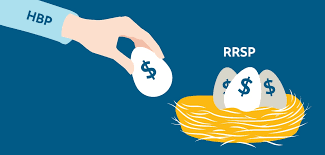If you’ve been exploring the idea of buying your first home in Canada, you’ve probably realized something confusing: being a “first-time homebuyer” doesn’t always mean what you think it does.
Different federal and provincial programs use different definitions, and those differences can have a big impact on which benefits you qualify for.
We see this all the time with clients. For example, someone may assume they’re a first-time buyer because they’ve never owned property in Canada—only to discover that a home they owned overseas makes them ineligible for certain programs. On the flip side, someone who owned a condo years ago might not realize they could still qualify again under certain conditions.
So let’s break down how “first-time homebuyer” is defined across three of the most common programs in Canada:
- Ontario Land Transfer Tax (LTT) Rebate
- RRSP Home Buyers’ Plan (HBP)
- First Home Savings Account (FHSA)
1. Ontario Land Transfer Tax Rebate: The Strictest Definition
If you’re buying in Ontario, the LTT rebate is likely the first incentive you’ll hear about. It can save you up to $4,000 on provincial land transfer tax—and another $4,475 on the Toronto municipal land transfer tax if you’re purchasing in the city.
But the rules here are strict. To qualify, you must:
- Be at least 18 years old
- Have never owned a home or any interest in a home anywhere in the world
- Live in the property as your principal residence within nine months of purchase
- Have a spouse or partner who also meets the “never owned” rule during your relationship
That last rule surprises a lot of couples. If your partner owned a home before you got together, you’re fine. But if either of you owned property while in the relationship—even overseas—you’re disqualified.
There’s also a citizenship requirement: you or your spouse must be a Canadian citizen or permanent resident to claim the rebate. If permanent residency is granted later, you only have a short 30-day window to apply retroactively.
Bottom line: Ontario’s LTT rebate follows a “never-ever rule”—once you’ve owned, you’re out.
2. RRSP Home Buyers’ Plan: The “Fresh Start” Rule
The RRSP Home Buyers’ Plan (HBP) is far more forgiving. It allows you to withdraw up to $60,000 as a couple from your RRSPs to use toward your down payment.
To qualify, you must:
- Not have lived in a home you (or your spouse/partner) owned in the current year or the four preceding calendar years
- Have a signed agreement to buy or build a qualifying home
- Intend to live in the home within one year of purchase
- Be a Canadian resident at the time of withdrawal and purchase
This four-year lookback rule creates what I call the “fresh start clause.” Even if you’ve owned before, as long as you (and your partner) haven’t lived in an owned home for at least four years, you may qualify again.
3. First Home Savings Account (FHSA): The Newest Option
The FHSA is a newer program—and it’s quickly become a game-changer. It combines the tax advantages of an RRSP and TFSA, allowing you to contribute up to $40,000 toward a first home.
Eligibility is similar to the HBP, with one key twist. To open and use an FHSA, you must:
- Be a Canadian resident between 18 and 71 years old
- Not have owned or lived in a qualifying home in the year before opening the FHSA or in the previous four calendar years
- Consider your spouse or partner’s ownership as well if you lived with them
Here’s the nuance: you need to meet the definition at the time you open the account, not just when you withdraw. That’s why we recommend opening an FHSA early—even with a small contribution—if you think you might buy within the next few years.
Side-by-Side Comparison
| Program | Never Owned Rule | Four-Year Lookback | Spouse/Partner Included | Key Restriction |
| LTT Rebate (ON) | Yes | No | Yes | Ever owned anywhere = disqualified |
| HBP (RRSP) | No | Yes | Yes | Based on occupancy |
| FHSA | No | Yes | Yes | Based on ownership + occupancy |
Takeaway: The Ontario LTT rebate is the strictest, while the HBP and FHSA allow for more flexibility if you’ve taken a break from homeownership.
Why This Matters for Mortgages
Beyond rebates and tax savings, “first-time homebuyer” status can also affect mortgage rules.
- First-time buyers: Eligible for a 30-year amortization with mortgage insurance, whether buying new or resale.
- Repeat buyers: Only eligible for a 30-year amortization if purchasing a newly built home. For resale homes, the maximum insured amortization is 25 years.
That extra five years can make a big difference in monthly affordability.
Our Advice
- Don’t assume you qualify (or don’t) until we review your situation. The details matter.
- Open an FHSA early if there’s any chance you’ll buy in the next few years.
- Be upfront about ownership history—yes, even that vacation property from years ago may count.
Get professional guidance to avoid missing out on benefits or making costly mistakes.
Final Word
Whether you’re buying your very first home or your first in a while, understanding how each program defines “first-time homebuyer” can save you thousands and make your path to homeownership smoother.
👉 Ready to find out what you qualify for? Book a call with me and let’s put together a plan that works for you.



